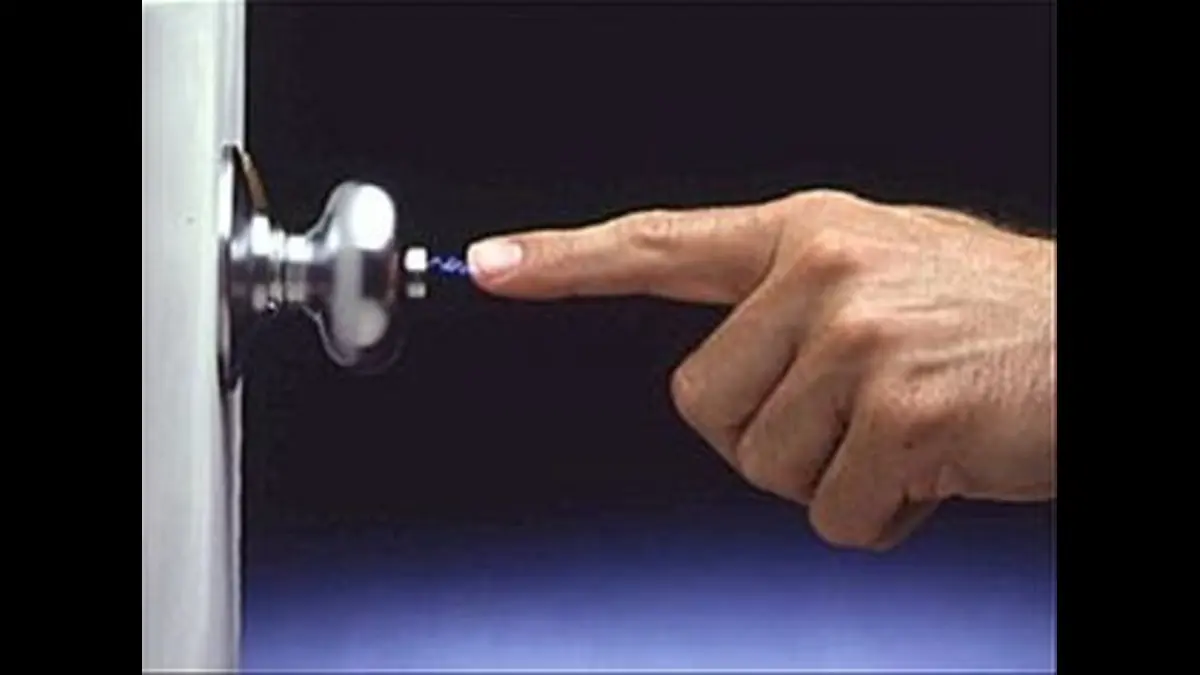Updated 2 April 2025 at 16:23 IST
Know Why Door Handles, Taps, Chair, Blankets Give You Shocks
The buildup of static charge often occurs due to friction. At a microscopic level, even smooth surfaces are rough and irregular.
- Lifestyle News
- 4 min read

New Delhi: We’ve all experienced it a sudden zap when touching a door handle, a tap, or even when cuddling with a furry pet. Static electricity, while common, is a surprising and intricate phenomenon. From playground slides to your favorite chair, static shocks can occur just about anywhere. But why do we get zapped, and what causes the buildup of electricity? The answer lies in the physics of atoms and electrons.
What is static electricity?
To comprehend static electricity, we first need to explore the building blocks of matter, atoms. Every atom contains a dense nucleus at its core, made up of protons and neutrons, with electrons orbiting around it. Electrons carry a negative charge (-1), while protons have a positive charge (+1). Normally, atoms are neutral, with an equal number of protons and electrons. But when there’s an imbalance in the number of these charged particles, state electricity comes into play.
Electrons can escape from an atom, leaving it positively charged. Alternatively, electrons can be gained from another atom, making it negatively charged. The interaction between these charged particles leads to what we feel as static electricity.
The Role of Friction in Static Electricity
The buildup of static charge often occurs due to friction. At a microscopic level, even smooth surfaces are rough and irregular. When two surfaces rub against each other, these tiny irregularities cause friction, transferring electrons from one material to another. Materials like copper, for instance, can easily lose electrons, while rubber can gain them, leading to an imbalance in charge.
Advertisement
Why Do I Get Zapped by a Door Handle?
When you walk on a carpet wearing rubber-soled shoes, the friction causes electrons to move from the carpet to your shoes. Rubber is an insulator, so the charge accumulates on your body. When you touch a metal object, such as a door handle, the accumulated electrons jump to the metal, resulting in a static shock. The shock occurs because the human body is an excellent conductor of electricity, and the metal objects are often conductors as well. The rapid discharge of electrons is what we feel as a zap.
This same principle applies to other situations, such as taking off a jumper or brushing your hair. Pets can also build up static charge in their fur, leading to shocks when you pet them.
Advertisement
Factors That Influence Static Shocks
Several factors influence how often and intensely you experience static shocks. These include:
Clothing Material: Fabrics like wool and synthetic fibers can increase static buildup.
Body Size: Larger people may accumulate more charge, while smaller individuals might feel the shock more intensely.
Temperature and Humidity: Cold, dry air is more conducive to static buildup compared to warm, humid conditions. Dry air is a better conductor of static, which explains why you’re more likely to experience shocks in winter.
While static shocks are typically harmless, they can be inconvenient and even damaging to sensitive electronics. In industries where static electricity poses a risk – such as computer repairs – workers often use anti-static devices to prevent damage.
How to Prevent Static Shocks
While you can't entirely eliminate static electricity, there are practical ways to minimize the frequency and intensity of shocks:
Increase Humidity: Use a humidifier in your home to keep the air moist. Humid air is less conducive to static electricity than dry air.
Moisturize Your Skin: Dry skin increases friction, making you more prone to static buildup. Keeping your skin moisturized can help reduce this.
Choose Shoes with Leather Soles: Rubber soles are insulators and can cause more static buildup. Leather soles, on the other hand, can help reduce the charge.
Discharge Before Touching: Carry a small metal object, like a coin or key, and touch it to metal surfaces before you approach them. This helps discharge any built-up static charge safely.
Special Precautions in Certain Fields
In workplaces where static electricity can cause damage, such as electronics repair or hazardous environments, anti-static tools are used. Workers may wear anti-static wrist straps or waistbands, which safely discharge the excess electrons to the ground, preventing shocks and protecting sensitive equipment.
While static shocks are a common and usually harmless annoyance, understanding the science behind them can help reduce their occurrence. By controlling factors like humidity, wearing appropriate clothing, and using preventative measures, you can reduce the frequency of static shocks and the discomfort they bring.
Published By : Isha Bhandari
Published On: 2 April 2025 at 16:23 IST
